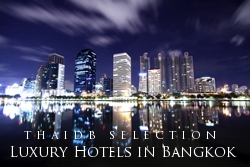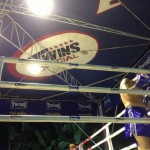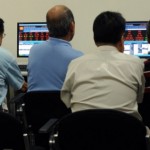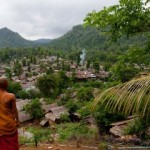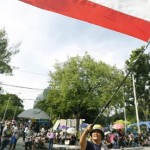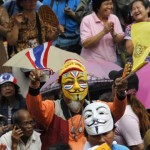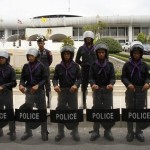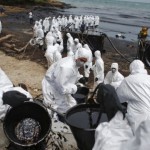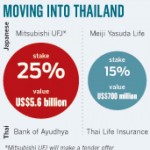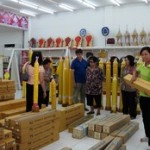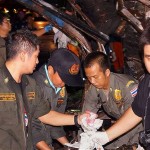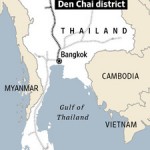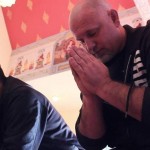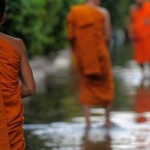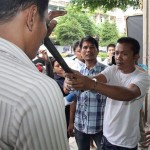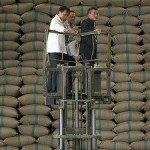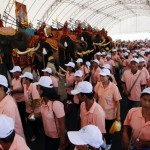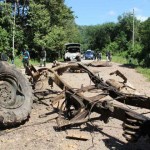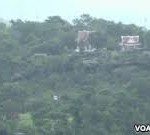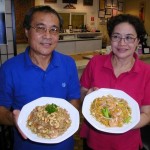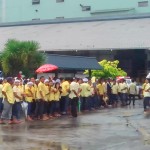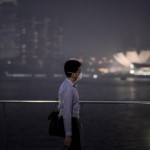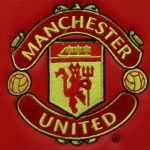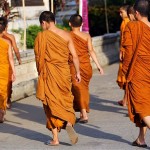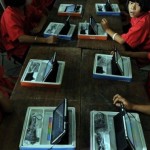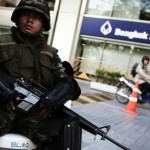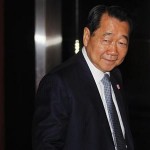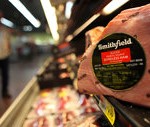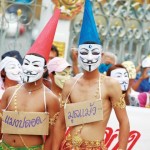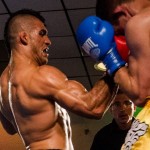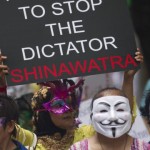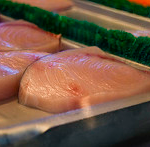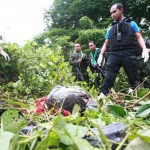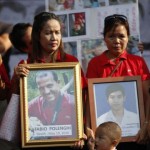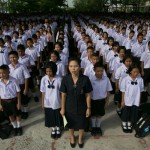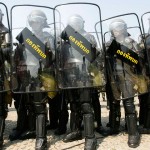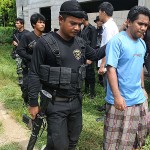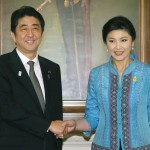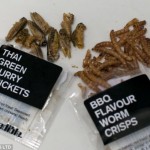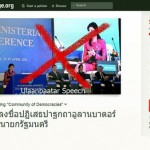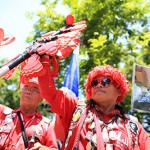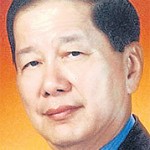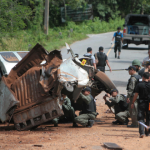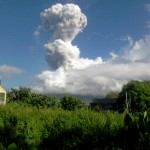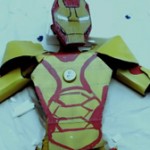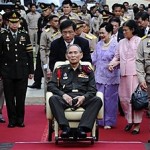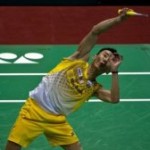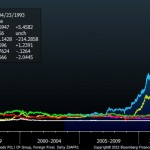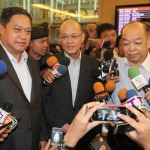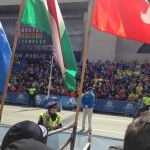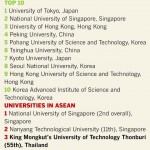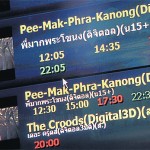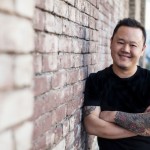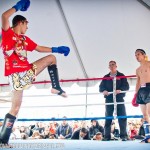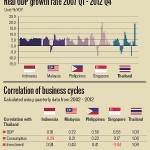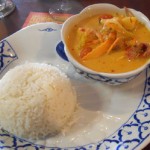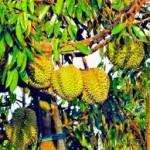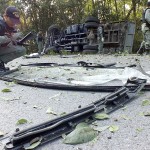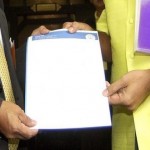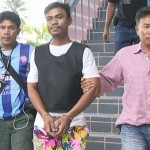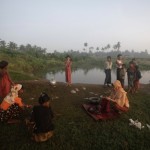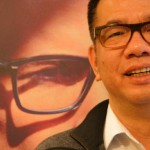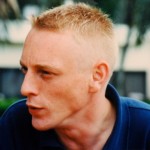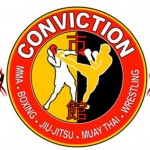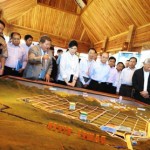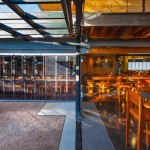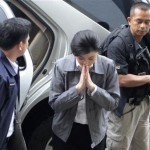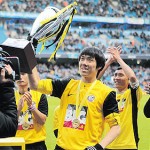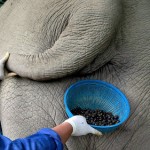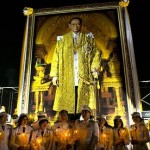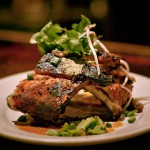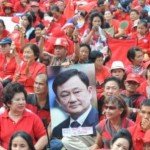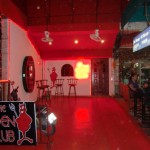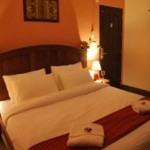The Strange Thai Insurgents Who Like Sorcery and Get High on Cough Syrup
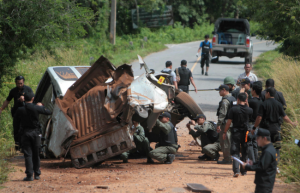
Krue Se Mosque is just outside the city of Pattani on the shoulder of Highway 42, so nondescript you could breeze by without noticing. A bullet-riddled sign bears the notation, “Tourism Authority of Thailand,” but nobody coming here is a tourist. Any visitor is told –first with glances, soon in stronger terms — to keep his sojourn brief.
Before a cool April dawn in 2004, a hundred machete-armed guerrillas launched simultaneous attacks on eleven police and army posts, then took refuge in the mosque. Some were high on a brew of cough syrup, Coca-Cola, and a narcotic plant called kratom. Some were motorcycle-riding “pilgrim bandits,” half hajji and half Hell’s Angel. Most wore amulets that they believed made them invisible to their enemies, or capable of teleportation, or invulnerable to any type of weaponry. The talismans proved no match for the Thai army’s machine-guns and rocket-propelled grenades. The blood has been washed from the courtyard stones, but the bullet-holes in the sign at the mosque’s portal remain defiantly unfilled to this day.
Welcome to the Pattani revolt: one of the world’s longest-running insurgencies, and certainly among its most bizarre. The ravaged provinces of Thailand’s Deep South lie less than 400 miles from the holiday-makers’ utopia of Phuket, but for reasons that remain shrouded in mystery, the world of the bombs and the world of the beaches might as well be on different continents.
The violence had simmered for decades before flaring into full blaze at Krue Se. Over 5,300 people have been killed since 2004: for a population of only 1.8 million, a rate of carnage nearly double that of Afghanistan. The insurgents, Muslims in an overwhelmingly Buddhist nation, use the fiery rhetoric of jihad. But the rebels are motivated by identity rather than theology, and even this motivation is hazy: they’re driven less by what they are than by what they are not. They use Islamist language, but they’re mystical Sufis rather than by-the-book Salafists; they’re united by Malay language and culture, but they have no desire for unification with their cousins right across the border in Malaysia; they don’t see themselves as belonging to Thai society, but they have no clear picture of where– or even in which era– they might want to belong.
They have been courted by terrorist groups ranging from Al Qaeda to Hezbollah to Indonesia’s Jemaah Islamiyah. The rebels have sent them all packing. This leaves intelligence officials of several countries baffled, because the day that the Pattani militants link up with a transnational outfit, “we’re all” (as one Western operative says bluntly) “in a world of hurt.”
I have looked at this issue through a variety of lenses. I am an anthropologist by background, but have also worked as a journalist and a government official. Over the past five years I have made eight reporting trips to Thailand and Malaysia, visiting each of the core provinces (Pattani, Narathiwat, Yala), as well as the affected districts of Songkhla and the Malaysian border state of Kelantan. I have interviewed militants in the field, security officials, exiled rebel leaders, and ordinary citizens just trying to get by. If the conflict can be summed up in three letters, they would be “WTF?”
The story of the Pattani uprising is one of blood and magic, of outrageous characters living in the 21th century but simultaneously in the 16th. It is a tale of a revolutionary movement with an impenetrable cell structure seeking the restoration of a long-dead sultanate, in the name of an ethnic identity that none of its champions can convincingly describe. It reveals a great deal about radical Islam — or perhaps nothing whatsoever. Most of all, it is a cautionary lesson for anyone claiming to understand such grand notions as “Islamist terrorism” or “globalized jihad,” whether in Palestine, Dagestan, or Boston: If all politics is local, perhaps all insurgency is as well.
***
Both the government and the rebels commit unspeakable deeds. Live bodies are stacked like cordwood in police vans and emerge hours later as corpses. Schoolteachers and clerks are publicly beheaded. An imam was tortured to death over the course of days, displayed in a makeshift cage. A saffron-robed monk was blown to pieces. An informer was crucified, hands and feet nailed into the street, and soldiers didn’t even bother to cast lots for his clothing.
Most young men in the Deep South know someone who’s been killed, crippled, or arrested. Nearly all have been humiliated by authorities, often on a daily basis. What separates the 10,000 juwae — the young fighters who form the backbone of the insurgency — from the rest of their angry, alienated peers? A soda bottle, perhaps, and a headband.
The soda-bottle contains a narcotic brew based on the kratom, a leaf that grows wild throughout the region. Traditionally, it is taken with tea to mask its bitter taste. Today, the mixer is typically Coca-Cola, or sometimes, strawberry Fanta. The effect of kratom is similar to that of ya-ba or methamphetamine, and it has long been popular with construction workers, long-haul truckers, and anyone else with a professional need for periods of hyper-alert insomnia.
The juwae do not need to be sleepless and paranoid, so they balance the stimulant of kratom with the depressant of codeine. The beverage they favor was initially called “4 x 100,” with the first numeral representing the number of ingredients (kratom, cough syrup, cola, and a fourth element varying by the brewer’s taste) and the second (like so much else in the insurgency) bearing no clear meaning at all. The number of additional ingredients has spiraled, so the cocktail of rebellion is now known as “8 x 100.” The foundation is still kratom, codeine and soda, but these are supplemented by meth, crushed mosquito coil, tungsten from the inside of light bulbs, and dried bird excrement. Some of the hardest-core militants boast of lacing their beverage with ash from a human corpse.
Why on earth would anyone drink this? Why would anyone get high on it every day until he has been drained of all capacity for rational thought? Some say it is bravado, others claim sorcery. But perhaps, tautologically, the second question answers the first.
The headband, meanwhile, is inscribed with Quranic verses and blessed by any of several hundred charismatic clerics. It could just as easy be a slip of cloth tied around a wrist, or an amulet worn around the neck. Some juwae favor a bath in holy water. Orthodox Muslims shun such displays as superstition, but the line between folk practice and rank heresy is often hazy.
The Krue Se massacre merely softened, rather than utterly discredited, belief in the efficacy of talismans. Sunai Phasuk, a skeptical observer (and resident expert on the South at the Thailand office of Human Rights Watch) says his militant friends have tried to prove the potency of their amulets by live demonstrations: they’ve hacked at each other with machetes before his doubting eyes, yet — protected by their spells — they’ve remained unscathed. He feels there must be some sort of trick but cannot explain what he says he’s witnessed.
The most celebrated purveyor of talismans is an imam named Ismail Rayalong, a.k.a. Ustad Soh. He lives underground in Malaysia but crosses into Thailand at will: According to his followers, he evades capture by his ability to fly through the air or melt into the scenery or cause bullets to turn to dust upon contact with his skin. It was his acolytes, protected by his amulets, who were gunned down at Krue Se. This might appear to void the warranty on his magic, but Ustad Soh is still seen as the region’s most powerful sorcerer. His followers are called the Brotherhood of Divine Judgment, and under his direction they seek invulnerability by drinking holy water or working themselves into a trance by reciting secret mantras.
Whatever the supernatural efficacy of the talismans, there is no question that they work magically well in bringing terror: people who dismiss the spiritual power of the charms have no doubts about the ruthlessness of the youths who carry them. Juwae on motorbikes flash their amulets to the guards at police checkpoints and are waved through.
“When you see a kid with one of these cloths tied around his wrist,” warns Sunai, “run.”
***
The insurgency is a tightly controlled, rigidly hierarchical organization structured on classical Maoist guerrilla precepts. Or perhaps it’s a completely anarchic, utterly decentralized grassroots movement, with no organized command structure whatsoever. In truth, it probably used to be one thing and has morphed into another. Also in truth, nobody — not the Thai authorities, not Western intelligence services, not the population of the Deep South, and maybe not even the insurgents themselves — actually knows.
In the 1960s and 1970s, the rebellion was led by a few groups operating in ways familiar to any student of guerrilla warfare: they hid out in the jungle, launched hit-and-run attacks on uniformed security forces, received support from like-minded governments and diaspora communities, and spouted the rhetoric of anti-imperialist struggle. A widely feared field commander with whom I had a surreptitious meeting in Yala last year told me that he’d wept at the death of Muammar Qaddafi: the Pattani rebel still had fond memories of embracing the Libyan leader at a desert training camp three decades earlier. The major outfits back then were PULO (the Pattani United Liberation Organization, which is still quite alive and arguably relevant) and BRN (the Barisan Revolusi Nasional, which is still quite relevant, but only arguably still alive). In the 1980s and 1990s, a combination of softer approaches from Thailand and a crackdown by Malaysia sent PULO into exile and BRN deep underground.
After lying dormant for about a decade, the insurgency began to reemerge in 2001. A shooting here, a bombing there — at first it seemed to be the death-shivers of a 20th-century throwback. But the young guns, the juwae, were not like their elders. They had no identifiable leaders, they issued no press statements, they didn’t seem to have any structure whatsoever. The old ones had scrupulously avoided civilian targets, but the new ones didn’t seem to care. The older generation had discipline, a recognized chain of command, a set of leaders with whom you could sit down and do business; but kids these days — who can figure them out?
“There is no single great insurgency,” says Grisada Boonrach, governor of Songkhla and former governor of Yala. “There are a multitude of tiny insurgencies.” Grisada has a reputation for thinking seriously about the unrest and doing a better job of addressing popular grievances than perhaps any other administrator. A local leader might be respected in his own village, Grisada says, but utterly powerless in the neighboring one. This makes life difficult for rebel and governor alike. There is nobody to orchestrate a truly effective insurgency — but also nobody with whom the government can cut a deal.
If the footsoldiers don’t take their marching orders from the exiles of PULO or the unidentifiable (and possibly nonexistent) leaders of BRN-C, who do they follow? I’ve interviewed two pemimpin (field commanders), one on the ground in Yala and one in the capital of a nearby country; both presented a picture of an almost anarchic movement, very similar to that described by Governor Grisada. There is no Pattani Che Guevara. The public faces of the insurgency are those of religious leaders who are said to provide inspiration but not direction.
One such cleric stands above the rest, a tiny man with enormous power. He has a bounty on his head of 10 million baht ($325,000), but he is not accused of any act of violence (he is wanted for treason, a far more nebulous charge). His name is Sapae-ing Basoe, and he is known throughout the Deep South simply as “The Headmaster.” It is an accurate nickname: He founded the Thamma Witthaya Islamic School, an academy that educates up to 6,000 students at any time. But his diminutive physical stature, advanced age (he’s now in his early 70s), and rumored supernatural abilities have caused members of Thai intelligence to give him another nickname: Yoda.
In the years prior to his withdrawal from the public eye, he earned widespread reverence by preaching in the pool-halls where aimless roughnecks congregate and never hesitating to back up his sermons with a smack to the head. Yoda was famous for loitering outside the whorehouses of Yala and berating any of his students whom he saw emerging; the burly bouncers did not dare intervene, for they knew that anyone who challenged the tiny cleric had a way of quickly ended up in a ditch.
Yoda has never given an interview, and refuses even to speak with a non-Pattani. He is said to be living in Malaysia, or Indonesia, or perhaps deep underground in Thailand. The “Wanted” poster displayed after his flight shows a man with a trim gray soul-patch and a black Malay cap. Unlike his nick-namesake, he is not bald, his face is unlined, and his skin has no hint of green. But his pointed ears are slightly out-turned, and taper into distinctly elfin tips.
***
At the heart of the insurgency, even when viewed through a haze of kratom and mysticism, even when compounded by question of who actually can speak for (let alone direct) the cause, is a question of identity.
Inhabitants of the Deep South view themselves as heirs to the Pattani Sultanate, which once encompassed much of the narrow chicken-neck now comprising southern Thailand and northern Malaysia. The historical identity of the region is so strong that the insurgents regard as alien even Thai Muslims whose native tongue is not Pattani Malay (this includes Gen. Sonthi Boonyaratglin, the commander-in-chief of the Thai army and leader of the military-backed government during one of my visits). But the precise nature of Pattani identity is illusive. As Zakee Pitakumpol, a baby-faced professor at a local university put it, “My Buddhist friends just think of me as a Muslim. My Pattani friends say my family is from Songkhla, so I’m Thai. To be honest, I don’t know what I am.”
What does Pattani identity consist of? Zakee, like everyone else I have asked, has no clear answer. There is no unifying symbol of Pattani heritage, no towering historical figure, no single geographical site, nothing that provides a true rallying-point. When pressed, Zakee (like almost everyone else) comes back to language: To be Pattani, you must speak the Pattani dialect of Malay as your native tongue, and write it in the Yawi script.
Don Pathan, a resident of Yala, spends a lot of time with people who care about Pattani identity quite a bit. He is a key intermediary between Yoda and the outside world. Like Yoda himself, he is Pattani by marriage — Malay, interestingly, is something one can become. When he is asked to convey a message to Yoda, he says, “I sip tea with guys in towns beyond any cellphone coverage, beneath signs that say, ‘Welcome to the liberated zone.’ The kids put their pistols on table, and then we talk.” Messages relayed, in both directions, tend to be terse and infrequent. When it comes to Pattani identity, however, most of the gun-toting kids struggle for answers: “They’re tired of having to prove themselves, of being asked ‘Are you really Thai?’ They have no clear answer, so they start shooting.”
***
If a single week’s carnage in the Deep South were ever shifted to the tourist beaches, the financial and political toll would be incalculable. One of the great mysteries of the conflict is why it has not spread. According to PULO’s spokesman Col. Kasturi (whom I met in a nearby country, in a hotel room whose ashtrays overflowed with cigarette butts and whose trash-cans overflowed with the prickly red skins of rambutans), the conflict has been limited to the traditional boundaries of the Pattani sultanate by intent: “We have no wish to attack outsiders,” he says. “We could easily do so if we wished.” An alternate possibility is that the game is rigged: Rebels are believed to use neighboring tourist-friendly provinces to hide from police, launder money, and run a variety of low-key, low-risk fundraising operations. As one Westerner involved in security put it, “You don’t shoot where you eat.”
The distance from local problem to universal nightmare can vanish without warning: In Boston, that interval was as brief as twelve seconds. Awareness of the Pattani insurgency in Western governments today is limited to a tiny number of intelligence analysts and Southeast Asia hands. Among those few, there is a shared attitude of wary unease: We don’t have the resources to figure out what’s really going on, and we don’t think it’s hooked up with a global terrorist group — yet . But any morning we may turn on the news and suddenly find that all our assumptions were disastrously wrong.
On the face of it, the rebellion seems to have everything to do with militant Islam. The fighters often call themselves mujahadeen, say they’re waging jihad, and refer to the Thai as kafir (unbelievers). A typical line of graffiti seen in the South reads, “Destruction of infidels and traitors is a religious duty.” Occasionally, militants stop a vehicle and force all passengers to recite the salat; those unable to do so face a beating, or far worse. Even in operational terms it is possible to see linkages: the Indonesia-based Al Qaeda affiliate Jemaah Islamiyah planned its 2002 Bali bombings partly from safe-houses in Bangkok, and one of its top operatives (Ridwan Issamuddin, a.k.a. Hambali) was captured in Thailand the following year.
Analysts and intelligence officials of several nations scratch their heads at the inability of global extremist groups to lure the militants of the Thai south into their family. But the Pattani insurgency, in its very aloofness, may offer lessons to anyone seeking an elusive Unified Theory of Jihadism. For the Pattani rebels, as for so many others who use religion as a rallying cry, Islam is a symbol more than a set of beliefs. If that weren’t the case, how could this uprising be permeated by such thoroughly un-Islamic practices as sorcery, narco-trafficking, butchery of innocents, and Coca-Cola cannibalism?
It adds up to a language, and an ethnicity: but ones not so different from those right across the border.
Also: rage at the killing and repression: but admission, also, that the kratom-fueled, talisman-draped juwae have dished out at least as much as they’ve received.
Then there’s the vague sense of historical loss: but the nostalgia is for a nation that died long before virtually any of the region’s inhabitants had even been born.
A deeply-felt pang of alienation, of constant humiliation, of being a second-class citizen in one’s own country. But awareness that the struggle has no resonance across the border, that this tainted soil is the only place one could ever truly call home.
So a young man rigs a bomb to his motorbike’s gas-tank and parks it by the food-stalls outside the police station. He lies in wait, machete in hand, for the teacher who’d forced him to learn his masters’ history rather than his own.
He is a fighter for Islam, in a way that confounds outsiders but makes perfect sense to him. The Pattani youth’s faith is not about a sacred scripture in a language he cannot understand, or a set of doctrines that no ustad in his village ever preached, or a worldwide community knitting together all Muslims into a single umma–a concept that has exactly the same meaninglessness for him as other abstractions like nation, race or humanity. His Islam has never been about any of this. It has been about something far more basic, and far less complicated: To be Pattani is to be Muslim. Everything that he is, is Pattani. Therefore, everything that he is, is Muslim.
This gut-definition sparks eye-rolls from madrassa scholars, wagged fingers from Wahhabi ideologues, and shrugs of incomprehension from intelligence analysts at Langley. But if the youth from southern Thailand had the words to converse with a counterpart from Kandahar, or Srinagar, or perhaps Chechnya by way of Cambridge Ringe and Latin High school, he might receive a quiet nod of sublime comprehension.
From: http://www.theatlantic.com/international/archive/2013/05/the-strange-thai-insurgents-who-like-sorcery-and-get-high-on-cough-syrup/275614/










